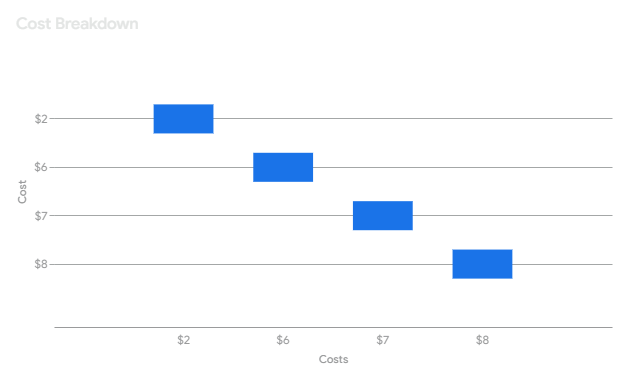So, you’re thinking about diving headfirst into online t-shirt sales in Canada?
Maybe you’ve got a killer design burning a hole in your brain, or maybe you just see those Shopify success stories and think, “Hey, I could do that!”
Well, hold your horses, buckaroo.
Before you sink your hard-earned loonies into this venture, let’s get real about whether selling t-shirts online in Canada is actually profitable.
(Spoiler alert: It can be, but it’s not as easy as slapping a design on a tee and watching the cash roll in.)
The Canadian T-Shirt Market
Look, the t-shirt market is HUGE.
Globally, it’s projected to hit a whopping $45.52 billion in 2024.
That’s a lot of tees!
But here’s the thing: that doesn’t mean everyone’s getting rich off cotton and ink.
In Canada, you’ve got some unique challenges:
- Higher Costs: Manufacturing, shipping, and even taxes can be pricier up north compared to, say, the US.
- Smaller Market: Canada’s population is a fraction of the US, meaning your potential customer base is smaller.
- Seasonality: Let’s face it, those “I ❤️ Canada” tank tops aren’t flying off the shelves in January.
But hey, don’t despair just yet.
There’s also a HUGE opportunity in the Canadian market:
- Less Competition: Fewer players mean more room for you to carve out your niche.
- Unique Identity: Canadians are proud of their heritage, and they’re willing to pay for products that reflect that.
- Growing Ecommerce: Online shopping is booming in Canada, and that trend isn’t slowing down.
So, is it profitable? It can be. But you need a solid strategy.
What to REALLY Expect Selling T-Shirts Online in Canada
Alright, enough with the motivational speeches.
Let’s talk cold, hard numbers.
You want to know what kind of dough you can actually rake in slinging tees online in Canada?
Buckle up, because we’re about to dive deep into the nitty-gritty of profit margins, conversion rates, and all that juicy stuff.
Breaking Down the Costs (The Ugly Truth)

Before we talk profits, we gotta talk expenses. Here’s a rough estimate of what you might be looking at:
- T-Shirt Cost: $5 – $15 (depending on quality, blank supplier, and quantity)
- Printing Cost: $5 – $10 (depending on the printing method and number of colors)
- Shipping Cost: $5 – $10 (within Canada)
- Platform Fees: Varies (Shopify charges monthly fees plus transaction fees, Etsy takes a percentage of each sale)
- Marketing Costs: Variable (could be a few hundred bucks a month or thousands, depending on your strategy)
Example:
Let’s say you’re selling a basic t-shirt with a single-color design. Here’s a possible cost breakdown:
- T-shirt: $7
- Printing: $6
- Shipping: $8
- Platform Fees: $2
- Total Cost: $23
Pricing for Profit (The Sweet Spot)
Now, let’s talk about how much you can actually charge for that bad boy.
Industry averages suggest a profit margin of around 20-30% is reasonable for online t-shirt businesses.
Using our example above, if your total cost is $23, you’d want to price your t-shirt somewhere between $28.75 and $34.50 to hit that profit margin.
But here’s the kicker: perceived value plays a HUGE role.
If you’ve got a killer design, a strong brand, and a loyal following, you can absolutely charge more.
Think about it: Would you rather buy a generic tee for $20 or a unique, high-quality shirt from a brand you love for $35?
My thoughts:
- Don’t Underprice Yourself: Value your time and creativity.
- Test Different Price Points: See what your customers are willing to pay.
- Offer Premium Options: Consider offering higher-quality materials or printing techniques at a premium price.
Conversion Rates (The Reality Check)
Conversion rate is the percentage of website visitors who actually make a purchase.
In e-commerce industry, a 1-2% conversion rate is considered pretty decent.
So, if you’re getting 1,000 visitors to your website per month, you can expect to make 10-20 sales.
But here’s the thing: Conversion rates can vary WILDLY depending on factors like:
- Website design: Is your website easy to navigate? Are your product photos high-quality?
- Marketing: Are you driving the right kind of traffic to your site?
- Product quality: Are your t-shirts well-made and comfortable?
- Customer service: Are you providing excellent service and building trust with your customers?
What I would do:
- Optimize Your Website: Make sure your website is user-friendly and visually appealing.
- Run A/B Tests: Experiment with different website elements to see what drives the most conversions.
- Offer Excellent Customer Service: Happy customers are more likely to come back for more.
Putting it All Together (The Big Picture)
Let’s say you sell 10 t-shirts per month at an average price of $30, with a profit margin of 25%.
Here’s what your monthly revenue and profit might look like:
- Revenue: 10 shirts x $30 = $300
- Profit: $300 x 0.25 = $75
Not exactly a fortune, right?
But here’s the key: scale.
Imagine if you could increase your website traffic, boost your conversion rate, and sell 100 t-shirts per month.
Suddenly, you’re looking at $750 in profit.
And if you can scale that even further, the potential is HUGE.
Actionable Advice:
- Focus on Growth: Don’t just settle for a few sales per month. Continuously work on growing your business.
- Reinvest Your Profits: Use your profits to improve your website, invest in marketing, and expand your product line.
- Build a Strong Brand: A strong brand will attract loyal customers and allow you to charge premium prices.
It’s a Marathon, Not a Sprint
Selling t-shirts online in Canada can be a profitable venture, but it takes time, effort, and a whole lot of hustle.
Don’t expect to get rich overnight. Focus on building a sustainable business, providing value to your customers, and constantly improving your operations.
And remember: the numbers are just a guide. Your actual results will depend on a variety of factors.
But with the right strategy and a relentless pursuit of growth, you can absolutely turn your t-shirt dreams into a reality.
How to Actually Make Money Selling T-Shirts Online in Canada
Here’s the cold, hard truth: Profitability isn’t guaranteed.
But with the right approach, you can absolutely build a successful t-shirt business in the Great White North. Here’s how:
1. Find Your Niche (and Dominate It)
Think “niche” is just a fancy buzzword? Think again.
It’s the foundation of your success.
Instead of trying to sell generic tees to everyone, focus on a specific audience.
- Passionate Communities: Got a killer design for hockey fans? Dog lovers? Anime enthusiasts? Tap into those passionate communities. They’re more likely to buy and become loyal customers.
- Local Pride: Canadians love their cities and provinces. “Toronto Strong” or “Vancouver Vibes” tees can resonate with local pride.
- Unique Interests: Maybe you’re into sustainable living, veganism, or craft beer. Find your tribe and cater to their specific tastes.
What to do:
- Research: Use tools like Google Trends and social media to identify potential niches.
- Validate: Before investing heavily, test your designs with a small batch of t-shirts.
- Listen: Pay attention to customer feedback and adjust your offerings accordingly.
2. Create Killer Designs (That Sell)
Listen, nobody wants another boring, cookie-cutter t-shirt. Your designs need to stand out.
- Originality: Don’t just rip off trends. Develop your own unique style.
- High Quality: Invest in professional design software (Canva, Adobe Illustrator) to create crisp, clean graphics.
- Emotional Connection: Your designs should evoke a feeling, whether it’s humor, nostalgia, or a sense of belonging.
What to do:
- Hire a Designer: If design isn’t your forte, consider hiring a freelance artist.
- Get Feedback: Show your designs to potential customers and get their honest opinions.
- Stay Updated: Keep an eye on design trends, but don’t be afraid to break the mold.
Read also: How to Design and Sell T-Shirts Online in Canada (So Easy)
3. Choose the Right Platform (and Master It)
Where you sell your t-shirts matters. A lot.
- Shopify: The king of ecommerce platforms. Offers a ton of customization options and apps to help you grow your business.
- Etsy: Great for handmade or vintage-inspired designs. Already has a built-in audience of craft enthusiasts.
- Social Media: Use Instagram, Facebook, and TikTok to build a following and drive traffic to your store.
What to do:
- Compare Features: Each platform has its own pros and cons. Choose the one that best fits your needs and budget.
- Optimize Your Listings: Use high-quality photos, compelling descriptions, and relevant keywords to attract buyers.
- Provide Excellent Customer Service: Respond to inquiries promptly and resolve issues efficiently.
4. Price Strategically (and Profitably)
Pricing your t-shirts is a balancing act. You need to be competitive, but you also need to make a profit.
- Factor in Costs: Consider your production costs, platform fees, shipping expenses, and taxes.
- Research Competitors: See what similar t-shirts are selling for.
- Value Pricing: Don’t be afraid to charge a premium for high-quality designs and materials.
What to do:
- Offer Discounts: Run promotions and sales to attract new customers and encourage repeat business.
- Bundle Products: Offer discounts for customers who buy multiple items.
- Tiered Pricing: Offer different price points for different levels of quality or customization.
5. Market Like a Madman (But Be Smart About It)
You’ve got the best t-shirts in the world, but nobody knows about them? That’s a problem.
- Social Media Marketing: Build a strong presence on platforms like Instagram and TikTok. Use eye-catching visuals and engaging content to attract followers.
- Paid Advertising: Run targeted ads on Facebook, Google, and Instagram to reach your ideal customer.
- Influencer Marketing: Partner with relevant influencers to promote your products to their audience.
What to do:
- Track Your Results: Use analytics tools to measure the effectiveness of your marketing campaigns.
- Experiment with Different Strategies: Don’t be afraid to try new things and see what works best for your business.
- Build an Email List: Collect email addresses from your customers and use email marketing to stay top-of-mind.
Don’t Forget the Logistics (The Boring But Important Stuff)
Okay, I know this isn’t the sexy part of the business, but it’s crucial.
- Production: Will you print your own t-shirts or use a print-on-demand service?
- Shipping: Offer affordable and reliable shipping options.
- Inventory: If you’re holding inventory, make sure you have a system for managing it.
- Customer Service: Be responsive and helpful to your customers.
- Legal: Make sure you’re complying with all relevant Canadian laws and regulations.
What to do:
- Use a Print-on-Demand Service: Services like Printful and Printify handle production and shipping for you, reducing your upfront costs and risk.
- Offer Free Shipping: Free shipping can be a powerful incentive for customers.
- Use a CRM: A customer relationship management (CRM) system can help you track orders, manage customer information, and provide excellent service.
The Bottom Line: Is it Worth It?
So, after all that, is selling t-shirts online in Canada profitable?
The answer, my friend, is it depends.
It depends on your niche, your designs, your marketing, and your execution.
But here’s the thing: If you’re willing to put in the work, build a strong brand, and offer unique value to your customers, you can absolutely build a successful t-shirt business in Canada.
Don’t be afraid to take the leap. Just be smart about it.
Recommended Tools:
- Design: Canva, Adobe Illustrator
- Ecommerce Platform: Shopify, Etsy
- Print-on-Demand: Printful, Printify
- Marketing: Facebook Ads, Google Ads, Instagram Ads
- Email Marketing: Mailchimp, Klaviyo
Remember: This is just the tip of the iceberg. There’s a whole lot more to learn about building a successful online t-shirt business in Canada. But with the right mindset and a solid strategy, you can turn your passion into profit.
Read also:
 cPanel Web HostingAffordable Canadian cPanel hosting, user-friendly and reliable.
cPanel Web HostingAffordable Canadian cPanel hosting, user-friendly and reliable. Reseller HostingStart your own hosting business with flexible reseller hosting plans.
Reseller HostingStart your own hosting business with flexible reseller hosting plans. Affiliate ProgramJoin our affiliate program and earn commissions by referring customers.
Affiliate ProgramJoin our affiliate program and earn commissions by referring customers. DomainsFind the perfect domain for your business or personal site with ease.
DomainsFind the perfect domain for your business or personal site with ease. Domain TransferTransfer your domain to us and keep your website running without interruption.
Domain TransferTransfer your domain to us and keep your website running without interruption. WHOIS LookupQuickly find who owns a domain with our easy WHOIS search tool.
WHOIS LookupQuickly find who owns a domain with our easy WHOIS search tool. VPS HostingReliable VPS hosting crafted for performance and peace of mind.
VPS HostingReliable VPS hosting crafted for performance and peace of mind.
